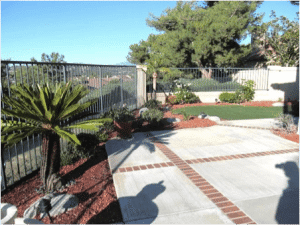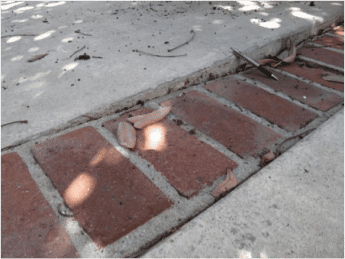Brick Dividers and Edging in Home Landscaping
Home » Yard, drive, walks, patios » Driveways »

Creating a comprehensive guide to brick dividers and edging in home landscaping requires a blend of technical advice, design inspiration, and practical tips. This article is designed to inform homeowners about the durability, installation, repair, and aesthetic appeal of brick landscaping features, offering a valuable resource for those looking to enhance their outdoor spaces.
Brick dividers and edging can transform a simple garden or patio into a sophisticated and organized outdoor space. Known for their durability and aesthetic appeal, bricks are a popular choice among homeowners looking to enhance the beauty and functionality of their landscapes. However, like any landscaping element, they require proper installation and maintenance to prevent issues such as cracking and settling. This guide offers insights into the causes of these problems, installation methods, repair techniques, and the overall popularity of brick in landscaping.
Understanding the Appeal of Brick
Why Choose Brick?
- Aesthetic Appeal: Brick offers a timeless look that complements both traditional and modern homes.
- Durability: When properly installed, brick can withstand extreme weather conditions, heavy foot traffic, and the test of time.
- Low Maintenance: Brick requires minimal upkeep compared to other landscaping materials, making it a cost-effective choice for homeowners.
- Versatility: Bricks come in various colors, sizes, and textures, allowing for creative design possibilities in garden paths, patios, and landscape edging.
Common Issues with Brick Landscaping

Causes of Cracking and Settling
- Soil Movement: Changes in the soil volume due to moisture fluctuations can lead to uneven settling.
- Improper Installation: Lacking a solid foundation or improper compaction can cause bricks to shift over time.
- Root Intrusion: Tree roots growing under brickwork can push bricks upward, leading to misalignment and cracking.
- Freeze-Thaw Cycles: In colder climates, water can seep into the pores of bricks, freeze, expand, and cause cracking.
Installation Techniques for Durability
Steps for Proper Installation
- Preparation: Remove vegetation and set a base of compacted gravel topped with sand to ensure a stable, level foundation.
- Laying Bricks: Place bricks tightly together to minimize gaps, allowing for natural expansion and contraction.
- Edging: Use metal or plastic edging on the sides to keep bricks in place.
- Drainage: Ensure proper drainage to prevent water accumulation that can weaken the base.
Repairing Brick Edging and Dividers

Effective Repair Strategies
- Realigning Bricks: For minor shifts, remove and realign bricks, ensuring the base is level and compact.
- Replacing Damaged Bricks: Remove broken bricks and replace them with new ones, matching the existing pattern.
- Addressing Root Issues: Trim roots that cause upheaval and reinforce the area with a stronger base.
- Sealing Cracks: Use a mortar or flexible sealant designed for outdoor use to fill in cracks.
The Popularity of Brick in Landscaping
Brick remains a preferred choice for homeowners due to its durability, aesthetic versatility, and the value it adds to property. It’s particularly popular for creating walkways, patios, and edging that define garden beds and pathways, offering a classic look that blends seamlessly with the natural environment.
Navigating Brickwork in Home Landscapes
When it comes to installing or repairing brick dividers and edging, homeowners have the option to DIY for smaller projects or consult with professionals for more extensive renovations. Landscape architects, professional gardeners, and masonry experts are equipped to handle complex designs and technical challenges, ensuring your brickwork is not only beautiful but also structurally sound.
Implications of Brickwork Issues
While brick is low maintenance, neglecting early signs of damage can lead to more significant issues, potentially affecting the overall integrity of your landscaping and, in some cases, causing safety hazards. Regular inspections and timely repairs can mitigate these risks, preserving the beauty and functionality of your outdoor space.
Who typically undertakes this work? The expertise of landscape architects, masons, and specialized hardscape contractors is invaluable, especially for projects requiring intricate designs or technical knowledge in dealing with soil and drainage issues.
Incorporating brick into your home’s landscape offers both aesthetic and functional benefits, making it a worthwhile investment for homeowners. As you embark on your next landscaping project, consider the lasting impact and timeless beauty that brick can offer. Are you ready to explore the possibilities that brick edging and dividers can bring to your outdoor space?



Weed eating over the bricks for years has slowly blasted away a bunch of the brick and left quite a lot of unsightly gouges in our brick borders. If I had to do it all over again I wouldnt use brick where weeds could grow, or would find some type of sealant to prevent weeds from growing around the bricks